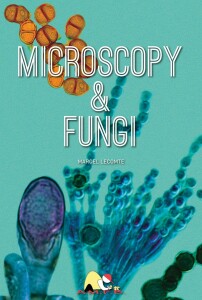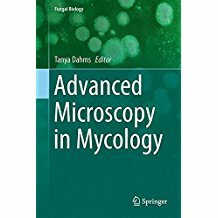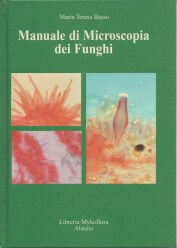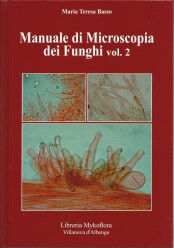Microscopy and Fungi (2024)- M.Lecomte
1 180,00 Kč vč. DPH
1 180,00 Kč bez DPH
|
Country | % VAT (books) | % VAT | |
|---|---|---|---|
| DE | 7 | 19 | |
| HU | 5 | 27 | |
| AUT | 10 | 20 | |
| BE | 6 | 21 | |
| BGR | 9 | 20 | |
| DNK | 25 | 25 | |
| EST | 9 | 24 | |
| FIN | 14 | 25,5 | |
| FR | 5,5 | 20 | |
| HR | 5 | 25 | |
| IRL | 0 | 23 | |
| IT | 4 | 22 | |
| CY | 3 | 19 | |
| LTU | 9 | 21 | |
| LV | 5 | 21 | |
| LU | 3 | 17 | |
| MT | 5 | 18 | |
| NLD | 9 | 21 | |
| PL | 5 | 23 | |
| PR | 6 | 23 | |
| RO | 11 | 21 | |
| GRC | 6 | 24 | |
| SVK | 5 | 23 | |
| SI | 5 | 22 | |
| ESP | 7 | 21 | |
| SWE | 6 |
25 |
Cena platí pouze pro české zákazníky. Vzhledem k novému nařízení Evropského parlamentu musí být konečná cena od 1. července 2021 kalkulována podle země konečného určení. Platnou sazbu DPH ve vaší zemi naleznete v tabulce výše (výše DPH se může v jednotlivých státech v rámci času pohybovat).
https://ec.europa.eu/taxation_customs/tedb/#/vat-search/vat-search-result
Záruka (měsíce): 24
Skladem: ano
Komplexní a podrobný popis technik používaných při mikroskopickém studiu hub. Kniha poskytuje podrobný přehled o mikroskopické práci na houbových preparátech, užitečné praktické rady založené na bohatých zkušenostech několika známých mykologů. Text je podaný a napsaný srozumitelným stylem a je doplněn ilustracemi a přehlednými souhrnnými tabulkami. Jedná se o první vydání v anglické mutaci této knihy. Celkově se jedná již o šesté, doplněné a rozšířené vydání původního farncouzkého díla Microscopie et Champignons. Kniha by měla být neocenitelná především pro každého, kdo chce rozvíjet své dovednosti v identifikaci hub pomocí mikroskopických technik.
Vazba: soft, kroužková
Jazyk: angličtina, 260 stran
ISBN: 9782960345209
TABLE OF CONTENTS
Introduction(s) to all my seminars 8
Our personal and educational targets 10
A list of abbreviations 10
About terminology 10
Part 1: the microscope 13
Which microscope to choose? 14
Components of a microscope 14
Refractive index (RI) 18
Why use Immersion Oil? 20
Some elements to guide your choice 21
Our master purchase 23
Procedure for carrying out a standard observation 23
Microscopy and photography 25
Superimposing photographs 29
Photography through a micrometric eyepiece 30
Spores: drawings or photographs? 31
Tools and storage flasks 34
Part 2: the basic equipment 35
First accessories 36
Microscope glass blades (GB) and their storage 36
Immersion oil 37
Cleaning the eyepieces and objectives 37
First observation 38
Observation media 39
Fluid media 39
Viscous media 41
Types of microscopic preparations 43
Extemporaneous microscopic preparations 43
half-definitive preparations 43
Assembly of uncoloured parts in definitive stained media 45
Definitive preparations 45
Definitive aqueous solvent media 46
Definitive media with benzene or keto solvent 47
A personal working protocol 49
Staining: limits and reality 50
Different types of staining 50
Nature and longevity of the dyes and reagents 52
About solutions in chemistry 54
Dissociation 55
Observation of fresh material 55
Drigalski’s triangle 56
Observation of exsiccata 56
Softeners 57
A new softening liquid: G.S.M. 58
Protocol for performing a mycologic preparation 59
Washing the preparations 59
Improve the readability of a preparation 60
Improve the dissociation of hard elements 61
Cleaning glass blades 62
Cuts for microscopy: a real problem 63
Freehand cuts 63
Freehand cuts with a support guide 64
Ranvier’s microtome 64
A new cutting device for Ranvier’s microtome 64
Genat’s microtome 65
Small automated laboratory microtomes 66
A rapid inclusion technique in paraffin 67
Leuckart’s bars 67
Using epoxy resin for inclusion 68
Accidents of handling and problems with your preparations 77
Becke’s line 82
Part 3: fungi under a microscope 83
The secret life of a mushroom 84
Ascomycetes: asci and ascospores 85
Ascomycetes: operculated or not? 87
Reactions with iodine 88
Little drops, vacuoles and nuclei 89
Causing sporulation of an Ascomycete 92
Causing birth of some Ascomycetes 93
Basidiomycetes: basidia and basidiospores 95
Some surprising basidia 97
Siderophilic basidia 99
A caulohymenium in the Boletales 101
About basidiospores 104
Reference models for the shape of most common spores 105
Shape of the spores and their ornamentation 106
How measuring spores? 107
Causing sporulation of a Basidiomycete 108
A protocol to observe the gills of a Basidiomycete 109
Spores and walls 110
Protocol for the observation of spores 111
Repetitive spores 112
Chlamydospores 13
Basidiomycetes: other conidia 114
Spores and melzer 115
Cystidia 116
Observing hooked cystidia (on the gills of some Pluteus) 118
Chrysocystidia 119
Acrophysalides in Amanita 120
Trabecular cystidia and pseudoparaphysis 121
Cuticles 123
Protocol for the observation of a cuticular coating 131
Protocol for the observation of Basidiomycetes with partial or general veil 131
Cuticular pigments 132
Cuticular hairs 135
Hymenial gel 136
Some special structures: acanthocytes and crystals 137
Trama of gills in the Basidiomycetes 138
Protocol for observing the trama of the Basidiomycetes 144
Types of hyphae in the Basidiomycetes 145
Protocol for observing the flesh of a mushroom 150
Aphyllophorales
Types of hyphae in the Aphyllophorales 151
Microscopy of the Polypores and Corticiaceae 163
Boidin’s A.M.A. reaction in the Aphyllophorales 168
Back to hyphae (structure and growth) 169
Different types of clamps (clamp connections) 172
Carnivorous mushrooms (toxocysts and gliosphex) 173
A special study of Hohenbuehelia atrocoerulea 177
Special staining and observation techniques 178
Regressive staining 179
Acid-resistant incrustations in the genus Russula 180
Dermatocystidia in the genus Russula 183
Some dyes are too little used 185
Cresyl blue 185
Cyanophilia 187
Study of the genus Lepiota (spores) 189
Nigrosin 191
Azo black (Chlorazol black) 193
Giemsa’s mixture 94
A novelty: little blue pills 196
Double staining applied to the Basidiomycetes 198
Congo red + phloxin B 198
Azo black + phloxin B 200
A new type of staining for Morchella sp. 201
Ammonia, a valuable chemical and a reagent 202
Ammonia reaction in the genera Inocybe and Conocybe 202
Crystals of calcium oxalate 203
K.K.’s reaction in the genus Amanita 204
About Plants and Glomeromycetes: endomycorrhiza 206
Plants and Glomeromycetes (spores) 210
Orchidoid mycorrhiza 213
Parasitic fungi 215
“Rusts” or Urediniomycetes 215
“Coals” or Ustilaginomycetes 220
Powdery mildews or Erisyphales 222
Vine has many enemies 226
Mildews 227
Moulds (generalities) 228
Moulds under a microscope 230
Moulds and growing media 232
Moulds are not always our friends 235
Yeasts 243
Mycological microscopy job aid 245
Checklist for a little mycophilic chemist 254
General bibliography 259
Addendum: some types of basidia 260
 čeština
čeština







